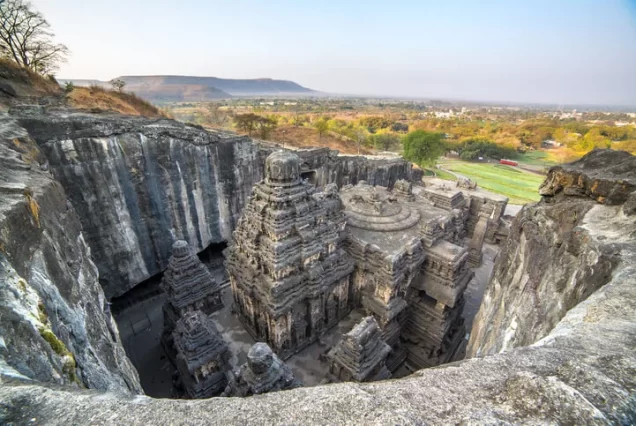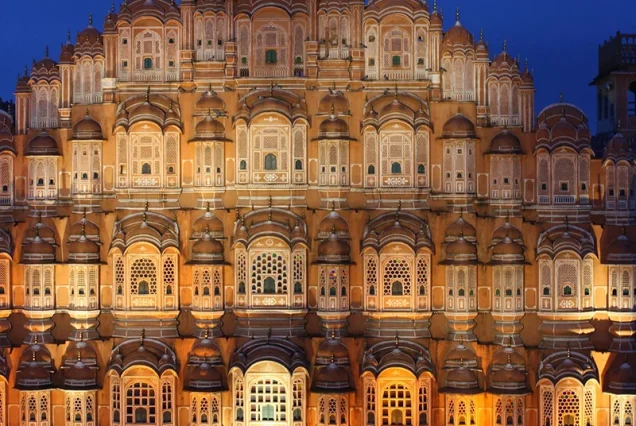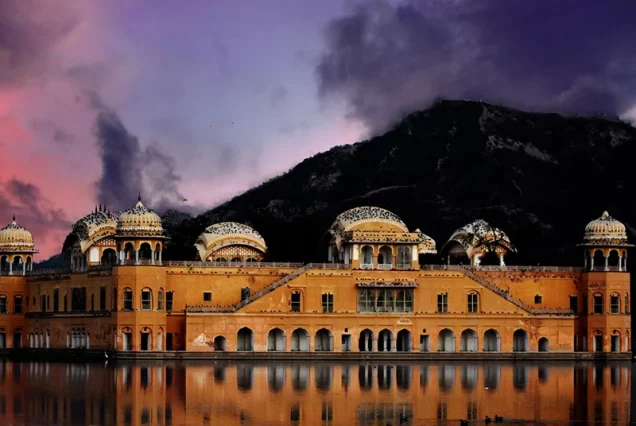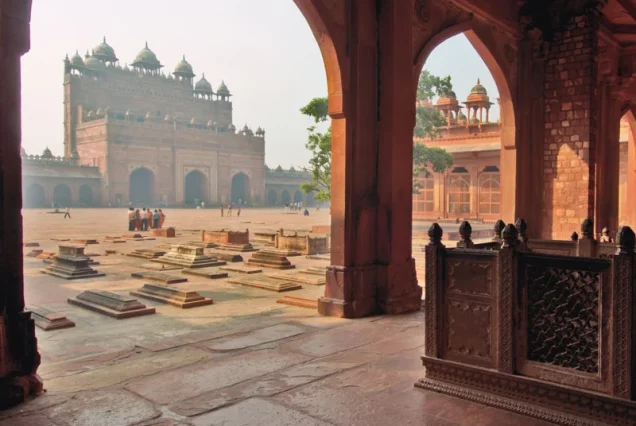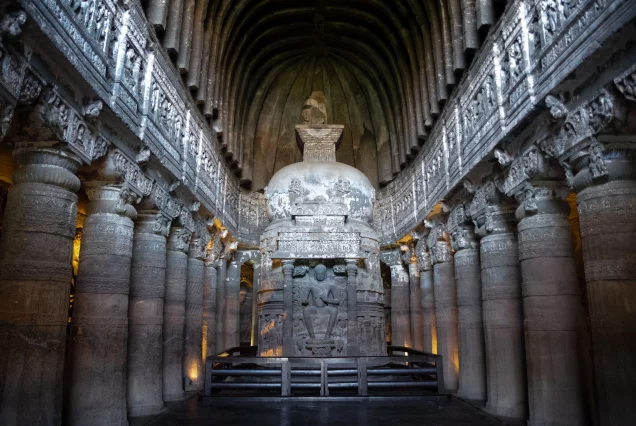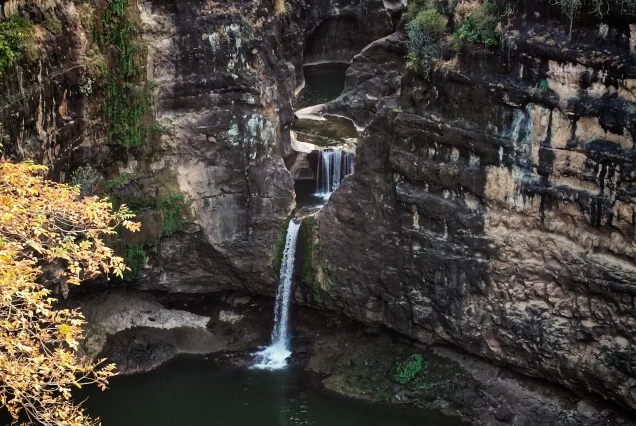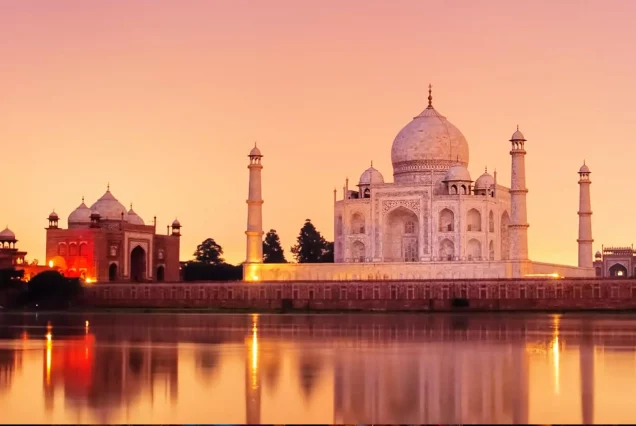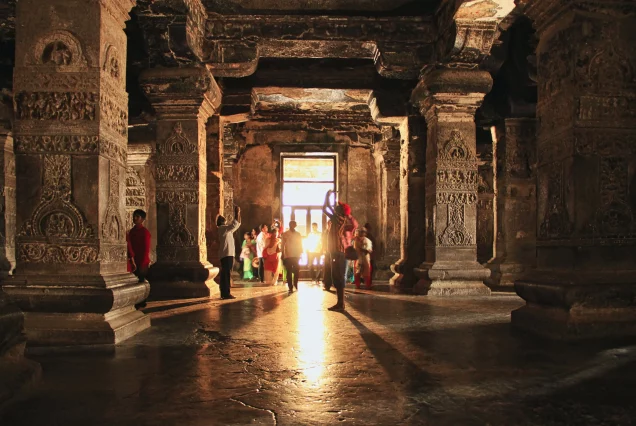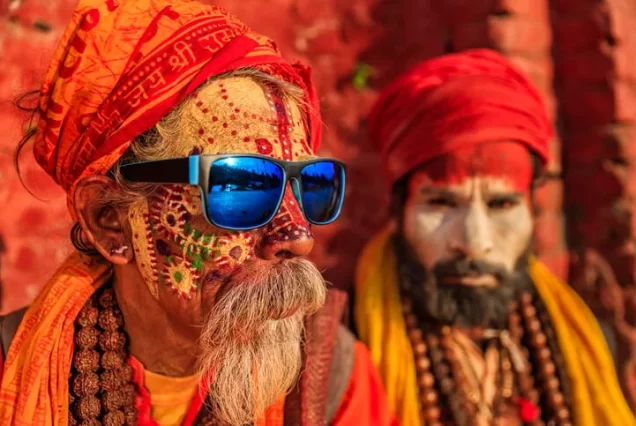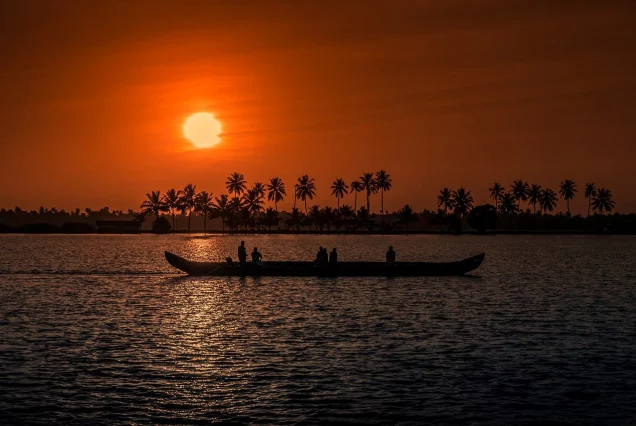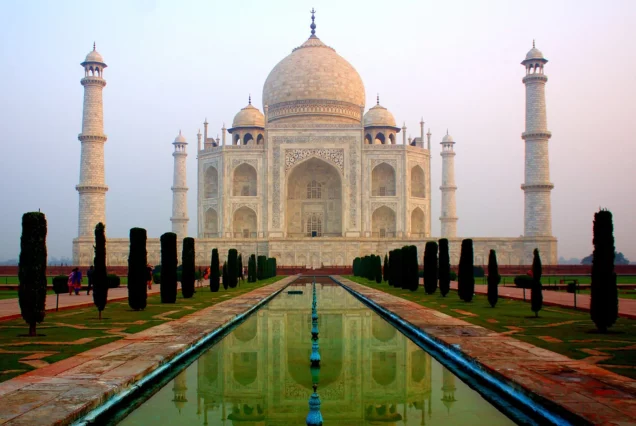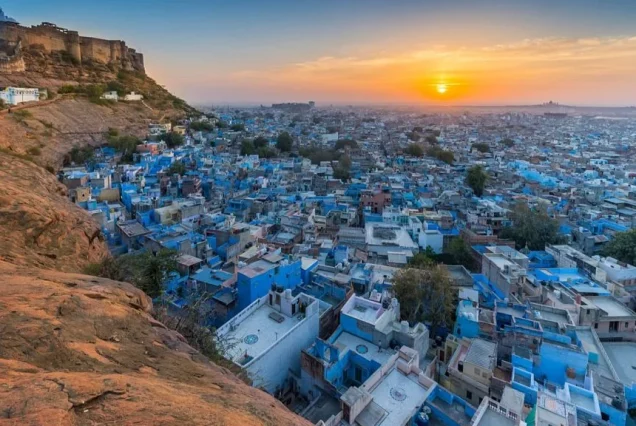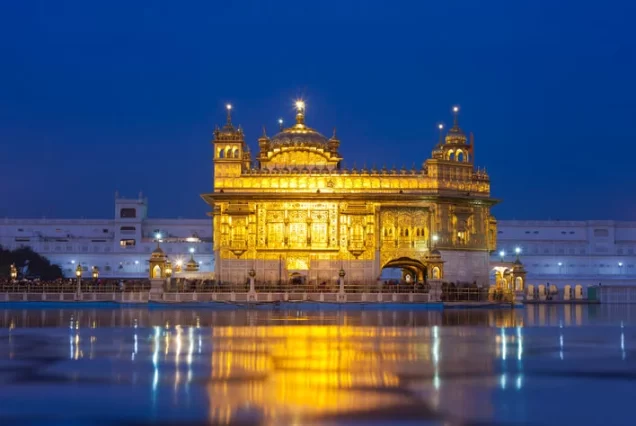Golden Triangle with Ajanta and Ellora
| Day | Place | Summary |
|---|---|---|
| 1 | Delhi | Arrival |
| 2 | Delhi | Jama Masjid, Chandni Chowk, Humayun’s Tomb, Red Fort, India Gate, Qutub Minar |
| 3 | Agra | Agra Fort, Mehtab Bagh |
| 4 | Agra - Jaipur | Taj Mahal, Abhaneri |
| 5 | Jaipur | Hawa Mahal, Panna Meena Kund, Amber Fort, City Palace, Jantar Mantar |
| 6 | Jaipur - Aurangabad | Arrival |
| 7 | Aurangabad | Bibi Ka Maqbara, Daulatabad Fort, Ellora Caves |
| 8 | Aurangabad - Ajanta | Ajanta Caves |
Golden Triangle tour package is one of the best tour plans which is mostly covered by first time travelers as this tour package and the cities included in this tour package are the best places to witness the rich culture and heritage of this diverse country – India. What comes to your mind when you hear the word India – Slumdog millionaire comes to your mind? If yes, then you are totally wrong as India offers plenty of unique and wonderful experiences for the travel enthusiasts. This country is rich in every other form of the climate, nature, landscape, wildlife, history, culture, heritage and many more aspects of a region.
India holds one of the most important histories of the world being one of the oldest civilizations in the world. However, with this golden triangle tour with Ajanta and Ellora we will be exploring the rich history of Mughals and Rajputs along with the history and stories from the early 2nd and 1st century. This tour package is one of the best India tour packages covering which you can get a glimpse about India’s rich culture and heritage by visiting the famous Amber Fort, Wind Palace, Taj Mahal or the rock-cut caves of central India.
Along with the history and ancient monuments, this tour package will also charm you with the vibrant bazaars which hold some of the unique and beautiful crafted hand-made luxuries which couldn’t be found anywhere in this world. So, if you are an active shopaholic then the golden triangle tour package will be the best decision of your life.
Custom Tours India is here to take you back to the past with our rich culture, heritage and enthralling stories about India’s invasion by different eras and their people. Below mentioned is the basic travel plan which you can follow; however, if you wish to add more sights or places, please feel free to let us know.
Day 1: Arrival at IGI Airport, New Delhi
You will be welcomed at IGI Airport, New Delhi by a representative of Custom Tours India who will escort you to your hotel. On the way to your hotel, a short travel plan will be shared with you about your golden triangle tour of India along with short tales about the city.
On reaching, check-in at the hotel booked by Custom Tours India and spend your rest of the day/evening at leisure as you might be flying from a long distance.
Day 2: Local sightseeing in Delhi
This morning, have your breakfast at the hotel and we will go for a full-day sightseeing tour of this colorful city by visiting all the major tourist attractions. Today, there will be an English-speaking tour guide who will take care of you and will explain to you interesting facts about this city and every monument you will be visiting.
- Jama Masjid: Jama Masjid is one of the striking historical monuments of India and is one of the largest mosques in India which can house 25,000 devotees at one time. The mosque was built by Mughal Emperor Shah Jahan in 1656 using red sandstone and white marble. The construction of this mosque was governed by architect Ustad Khalil and took almost 12 years for the completion. The mosque is built using Indo-Islamic architecture and is oriented towards the holy city Mecca.
Later, you will be taken inside the narrow alleys of ChandiChawk in the famous three-wheeler rickshaws where you can get a glimpse of local bazaars and daily life of sellers and buyers. This market is famous for spices, decorative items, window shopping, handicrafts and textiles.
Later, we will head towards our next monument of the day. Before this, we will be passing through another famous monument of this city – Red Fort. You may take pictures from your air-conditioned vehicle.
- Red Fort: Red Fort was constructed by Mughal Emperor Shah Jahan in the early 17th century when he shifted his capital from Agra to Delhi. This spectacular fort is built using the red sandstone due to which it is named as “Red Fort”. The fort had been the seat of power for Mughals for almost 200 years and was built keeping Persian, Timurid and Hindu traditions in mind. The main attraction of this fort is the “Hall of Commons” and the “Hall of specials” which are well decorated with marbles, floral decorations and precious stones on pillars, ceilings and walls.
Later, we will stop at one of the top restaurants in the city where you can have a taste of Delhi’s cuisines and flavors. Post lunch, we will continue to visit the sightseeing places.
- India Gate: India Gate is located in the center of New Delhi and acts as a war memorial dedicated to the Indian soldiers who lost their lives during World War I fighting for the British Army. This is the most happening place in New Delhi where you can see locals as well as tourists walking, playing and spending some leisure time. The India Gate was designed and constructed by Edwin Lutyens and acts as a symbol of sacrifice and dedication. The main attraction of this monument is the “Amar Jawan Jyoti” which was built later to show tribute to the lives of soldiers who lost their lives during India-Pakistan war of December 1971.
- Humayun’s Tomb: Humayun’s tomb is the first ever distinct example of Mughal and Persian architecture which was constructed by the widow of Mughal Emperor Humayun, Hamida Banu Begum, in the loving memory of her husband after 14 years of his death. The monument was completed in the year 1572 which was beautifully designed where the main tomb stands in the center of a big lawn surrounded by lush green flower beds, fountains and water channels.
- Qutub Minar: Qutub Minar stands at a height of 72.5 meters which makes it the world’s tallest minaret. This historical monument of India was built by the first Mughal conqueror of Delhi – Qutub-Ud-Din-Aibak in 1192 using the red sandstone. The minaret has 5-storey and 379 stairs with the inscription of Holy Quran on the outer walls and ceilings. The monument is one of the perfect examples of Indo-Islamic Afghan architectural designs and ideas.
Later, in the evening we will return back to the hotel where you can spend the rest of the evening. If you wish to go out for dinner, you may ask your driver.
Day 3: Drive to Agra and Local sightseeing
This morning, after your leisurely breakfast we will head towards another city of this golden triangle tour package that is Agra. After 3.5-hours’ driving over the newly built Yamuna Expressway you will be reaching your destination city.
On reaching, we will stop at one of the famous restaurants of the city where you can have a glimpse of Agra’s cuisines and favors. Later, we will head to your hotel where you can complete your check-in’s.
Rest for a while and then we will go for a half-day sightseeing tour of the city.
- Agra Fort: Agra Fort was the main residence of Mughals until the year 1638, before they moved their capital from Agra to Delhi. This historical monument of India was commissioned by Mughal Emperor Akbar and was completed in the year 1573 using the beautiful red sandstone and the white marble. The building is influenced by Mughal architecture which adds more charm to this fort. After the succession of the new king, Shah Jahan, many parts were re-built using white marble. The main attraction of this fort is the splendid rooms, magnificent rooms, beautiful mosque, royal bath made of marble, mirror palace and the massive halls for commons and specials.
- Mehtab Bagh: Mehtab Bhag is a beautiful garden which is located on the backside of the beautiful Taj Mahal which provides a mesmerizing view point of the Taj. This garden is one of the 11 gardens built by Mughal Emperor Babur during his rule. The garden is beautifully designed with the cluster of water channels, fountains, pavilions and lush green flower beds. You can also see the foundation of Black Taj Mahal which was about to be built here as a replica of Taj Mahal; however, the construction could not be completed due to family issues.
Later, in the evening you may return back to your hotel and spend your time at leisure. If you wish to go out for dinner, please feel free to ask your driver.
Day 4: Taj Mahal and drive to Jaipur
This morning at 5:45am, you will be accompanied by a professional English-speaking tour guide who will take you to visit the world famous – Taj Mahal.
- Taj Mahal: A perfect monument of love which was built by Mughal Emperor Shah Jahan in the loving memory of his wife, Mumtaj Mahal in the year 1653. Taj Mahal is a mausoleum which houses the tomb of both Mumtaj Mahal and Shah Jahan which was built by the help of 20,000 craftsmen over the period of 22 years. Mumtaj Mahal requested Shah Jahan to build such a monument which the world has never seen after her death so in order to fulfil her last wish, Shah Jahan ordered the construction of this majestic monument. The walls of the Taj Mahal are beautifully inlayed with precious and semi-precious stones which were influenced by Persian architecture.
Later, we will come back to your hotel where you can relax for a while and have your leisurely breakfast. Post check-out we will drive towards the next destination city – Jaipur which is well-known as “The Pink City«
On the way to Jaipur, we will take a short break at one of the ancient sites – AbhaneriStep-Well.
Abhaneri, is a small village which is well-known as the house of Asia’s deepest and largest step wells which were built for the purpose of storing waters for summers, chit chat place for women and resting place for pilgrims. This 13-storey step well have a total of 35,000 stairs which are all triangularly symmetrical to each other. Abhaneri step well is one of the oldest living steps well in India which was built in 8th century by the king Chanda from Nikumbha Dynasty.
Later, we will continue our drive towards Jaipur. On reaching, you will be helped with check-in’s and then you can spend the rest of the day at leisure.
Day 5: Local sightseeing in Jaipur
Early morning, have your tasty breakfast at your hotel and you will be introduced with your English-Speaking tour guide who will be with you for the complete day explaining your history and short stories about each monument you will be covering and this vibrant city of golden triangle tour package.
- Hawa Mahal: Hawa Mahal or the “Wind Palace” is one of the most famous monuments in the whole world which was built by Sawai Pratap Singh in the year 1799. The monument was built for the women of the royal family so that they can sit in these colorful windows to catch the glimpse of common people and vibrant bazaars. These windows were decorated with lattice work so that nobody can see inside the windows from outside to maintain the privacy of royal women. The monument has a total of 953 windows making it one of a kind in the whole world.
- Panna Meena Kund: Panna Meena Kund is an ancient step-well which was built in the early 16th century by the king, Jai Singh I in order to store water during the summer months of the year. This is one of the oldest step-wells of Rajasthan which was designed by a Brahmin. The main purpose of these step-wells are a tank for storing water, acts as a natural cooler during summer days, and a chit chat place for the women to discuss each other’s daily life.
- Amber Fort: Amber Fort is situated 11 kms from Jaipur which was the previous capital of the royal family. The fort was built in the year by Raja Maan Singh however, later the fort was expanded during the rule of Sawai Jai Singh I. The fort is beautifully built taking ideas from Rajput style architectural designs and patterns. The fort used to be the main residence for the royal family before shifting to Jaipur. The main attraction of this fort is the Sheesh Mahal “Mirror Palace», Ganesh Pol, Royal Chambers, Pavilions and the perfect hot Turkish bath setup at that time.
Later, in the afternoon we will head towards one of the top restaurants of the city where you can taste Rajasthan’s cuisines and its flavors. Post lunch, we will head to the remaining sightseeing places of Jaipur.
- City Palace: City Palace is situated in the heart of the city and was built in the year 1732 by the king, Sawai Jai Singh II when the royal family shifted their capital from Amer to Jaipur due to storage of water in Amer. The palace has been the seat of power since that time and attracts thousands of tourists locally and from all over the world. The palace has beautiful courtyards, museums, royal chambers and the unique colored gates add much charm to the palace.
- Jantar Mantar: Jantar Mantar is situated adjoining the exit gate of the city palace which was constructed by king Sawai Jai Singh II who was very much interested with the different positions of celestial bodies. There are a total of 19 instruments built using brass and bronze which tells us accurate things about the astronomical positions and time. The instruments are working fine till date using which you can check the positions of celestial bodies with your naked eyes. The main attraction of this monument is the man-made sundial which tells accurate time till date and has been declared as world’s largest sundial.
Later, you may explore the vibrant bazaars and narrow streets of the old Jaipur to catch the glimpse of local markets and daily life of Jaipurite’s. Jaipur is well-known as a shoppers’ paradise where you can buy precious and semi-precious stone, marble articles, blue pottery, handicrafts, textiles and decorative items.
Rest of the evening is free at leisure.Day 6: Drive to IGI Airport, New Delhi and fly to Aurangabad
This morning, have your leisurely breakfast and then catch the new Mumbai-Delhi Expressway to reach your next destination that is IGI Airport, New Delhi.
From here, you will be boarded to catch the flight to your next destination city – Aurangabad.
On reaching, check-in at your hotel and spend the rest of the day at the hotel relaxing in your room or by the pool.
Day 7: Local sightseeing in Aurangabad and Ellora Caves
This morning, have your leisurely breakfast and then we will take you to a full-day sightseeing tour of the city by visiting the below mentioned tourist sites of this ancient city.
- Bibi Ka Maqbara: Bibi-Ka-Maqbara is popularly known as “Taj Mahal” of Maharashtra and is one of the most impressive monuments of the state. The monument is built by Prince Azam Shah, son of Mughal Emperor Aurangzeb in the loving memory of his mother. The monument has been inspired by Persian and Mughal Architecture which perfectly reflects the rich heritage of Aurangabad. The inner walls of the monument are beautifully decorated with semi-precious stone inlaid on white marble.
- Daulatabad Fort: Daulatabad Fort was constructed during 12th century under the rule of King Bhilan, first king of Yadav’s. The fort is popularly known as one of the seven wonders of Maharashtra. After climbing almost 750 steps you can have a wonderful panoramic view of the complete city. The main attraction of this fort is the inner complexes such as Chand Minar, China Mahal and the Elephant Tank.
Later, at noon we will go for lunch at one of the city’s famous restaurants to have the taste of local cuisines and their flavors.
- Ellora Caves: Ellora Caves is situated at a distance of 32 kms from the main city center which is well-known for its architecture and majestic rock-cut Hindu temples. The caves are the cluster of temples and monuments which are dedicated to Buddhism, Jainism and Hinduism dated back to 600-1000 CE. These temples and caves tell us stories of mythology, gods of Hindu epics and tales of Buddhism. There are 100 caves in total out of which only 34 caves are open for public. In these 34 caves, 5 caves are specially for Jains, 17 caves are for Hindu’s and remaining 12 caves are for Buddhism. These caves were mainly used for praying, resting places for pilgrims and monasteries for monks.
Later, in the evening we will return back to your hotel where you can spend the rest of your evening.
Day 8: Excursion to Ajanta Caves and departure
This morning, have your leisurely breakfast at the hotel and then check-out. Later, we will proceed towards the world’s famous – Ajanta Caves. The one-way drive will take approx. 3-hours so we will start the day accordingly as we have to come back to board the flight.
- Ajanta Caves: Ajanta Caves are located at a distance of 103 kms from Aurangabad and are situated on the left banks of River Waghora. There are 30 caves in total out of which 5 caves are meant for sanctuary and remaining caves are meant to be for monasteries. These caves are well interconnected using the rock-cut stairs and are divided mainly into two parts. The first phase was built by Satayahana Dynasty, during the 2nd century to 1st century BCE where Buddha was worshipped in the form of Symbols. However, the second phase was built by Vakatak Dynasty during 5th century and 6 centuries where Buddha was worshipped in the form of Idols. Some of the caves also explain the theory behind cutting these majestic rocks into caves.
Later, we will drive back to Aurangabad Airport to board your flight back to New Delhi and then back to your home town.
My unique tour
When you search "Golden Triangle tours" in the internet you get tons of sites offering you this opportunity. But CustomTours is quite different. They are *custom*. It's my second trip this route. But it is not the same route.
Gvaduha
Ride with Nand
This amazing trip started in the early morning at the Delhi airport, where our driver, Nand Singh, met us. The next 4 days we spent with him doing one of the best trips of my life. He drove us to many great places, and we enjoyed the trip very much.
Vadim
Another wonderful trip!
This was my third trip booked through Sonia and her team. I was travelling with my parents and an aunt, all of whom are in their 80's. Our plans were a little complicated as we were all coming from different locations to meet in India for a two-week tour of Kerala.

ASL345
Classic Rajasthan Private Tour
We wanted to do more than the Golden Triangle.Ranthambore (tigers), Jaisalmer and Udaipur were a must. Sonia booked all this and more besides in super hotels and havelis, with an excellent driver for the whole trip and very knowledgeable tour guides in every city.
Bluenose10
Look no father for an excellent tour company
If you are looking for a special trip to India and its beautiful varied regions, Custom Tours India is the company to contact and have plan the trip. I have been to India 5 times (all planned by CTI and Sonia) and each time,
SavannahAnnie
India my favorite country
I have been to India several times always using Custom Tours India, Sonia is a delight to work with she may not say the same for me. I travel a lot, I can say Sonia is on top of every detail which makes the trip run so smooth.
Nancy Ruby
Outstanding
This was my 4th trip to India with Custom Tours. I cannot say enough positive things about Sonia and her drivers. They go way beyond to make sure every aspect of your trip is wonderful! They treat you like family.
Stephanie C
wonderful
I worked with Sonia to arrange our trip to India. She made it a very easy experience for us, made recommendations and answered all our questions. Our hotel stays were excellent. She even booked our air tickets
Melinda W
North India Trip
We worked with Sonia at Custom Tours India during our recent trip to India. She made it a very pleasant experience for us. She booked us at great hotels (Oberoi and Taj) at reasonable price. Our hotel stays were excellent.
Shankar N
Tour Map
Reviews
There are no reviews yet.
You May Like
Exótico recorrido por Kerala
Un día en Agra
Quick Links
Contact Info
- 1-A, Fateh Nagar, Surya Nagar, Taroon ki Koot, Tonk Road, Jaipur (Rajasthan) – 302015
- Copyright © 2025 | Custom Tours India | All rights reserved

